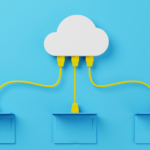Looking to make your Linux desktop environment truly your own? This comprehensive guide will walk you through the process of customizing your Linux desktop, from choosing the right desktop environment for your needs to personalizing it with themes and icons. You’ll also learn how to customize your Linux desktop with applications and shortcuts, making it more efficient and tailored to your workflow. Whether you’re a seasoned Linux user or just getting started, this article has everything you need to know to create a personalized and optimized desktop environment.
Introduction to Customizing Your Linux Desktop Environment
Linux is a versatile operating system that allows users to customize their desktop environment to suit their needs and preferences. Customization can range from changing the look and feel of your desktop with themes and icons to adding applications and shortcuts for quick access to frequently used programs. With Linux, you have the freedom to create a unique and personalized desktop environment that reflects your personality and workflow. In this guide, we will explore the various ways you can customize your Linux desktop environment and make it your own. Whether you are a seasoned Linux user or just getting started, this guide will provide you with the knowledge and tools you need to take your desktop customization to the next level.
Choosing the Right Desktop Environment for Your Needs
When it comes to customizing your Linux desktop environment, choosing the right desktop environment is crucial. There are many different options available, each with its own unique features and benefits. Some popular choices include GNOME, KDE, XFCE, and LXDE.
Before making a decision, consider your needs and preferences. Are you looking for a lightweight and minimalistic interface? Or do you prefer a more feature-rich and visually appealing desktop environment? Do you need compatibility with specific applications or hardware?
Researching each option and testing them out through live USBs or virtual machines can help you determine which desktop environment is the best fit for your needs. Keep in mind that you can always switch between desktop environments if you find that your initial choice isn’t working out for you.
Personalizing Your Linux Desktop with Themes and Icons
One of the most exciting aspects of using Linux as your operating system is the ability to personalize your desktop environment. By changing the themes and icons, you can make your Linux desktop look and feel unique.
Themes are collections of graphical elements that determine the appearance of your desktop environment. You can choose from a variety of pre-installed themes or download new ones from the internet. Many Linux distributions come with a default theme, but you can easily change it to something that suits your taste.
Icons are another way to customize your Linux desktop. They are small graphical representations of files, folders, and applications. Like themes, you can choose from a variety of pre-installed icon sets or download new ones. Some icon sets even have different designs for specific applications, making your desktop even more personalized.
Personalizing your Linux desktop with themes and icons is easy. Most desktop environments have built-in tools for changing themes and icons. For example, GNOME has a tool called “GNOME Tweaks” that allows you to change themes, icons, and other settings. KDE has a similar tool called “System Settings.”
In conclusion, personalizing your Linux desktop with themes and icons is a great way to make it your own. With so many options available, you can create a desktop environment that reflects your personality and style.
Customizing Your Linux Desktop with Applications and Shortcuts
One of the best things about Linux is the ability to customize your desktop environment to suit your needs and preferences. In addition to themes and icons, you can also customize your Linux desktop with applications and shortcuts.
Applications are the programs that you use on your computer, such as web browsers, text editors, and media players. Linux offers a wide variety of applications to choose from, many of which are free and open source. You can install new applications using your distribution’s package manager or by downloading them directly from the internet.
Once you have installed your preferred applications, you can customize your Linux desktop by creating shortcuts to them. Shortcuts are icons that allow you to quickly launch an application without having to navigate through menus or search for it in your file system.
To create a shortcut, simply right-click on your desktop and select “Create Launcher” or “Create Shortcut”. Then, enter the name of the application and the command to launch it. You can also choose an icon for your shortcut by selecting one from your system’s icon library or by uploading your own.
In addition to creating shortcuts for individual applications, you can also create custom application launchers that group multiple applications together. For example, you could create a launcher for all of your favorite web applications, such as your email client, social media platforms, and online productivity tools.
Customizing your Linux desktop with applications and shortcuts is a great way to streamline your workflow and make your computing experience more efficient and enjoyable. With a little bit of creativity and experimentation, you can create a personalized desktop environment that perfectly suits your needs and style.



GIPHY App Key not set. Please check settings